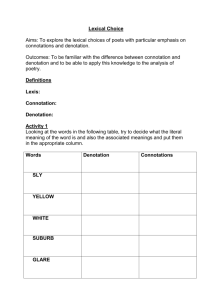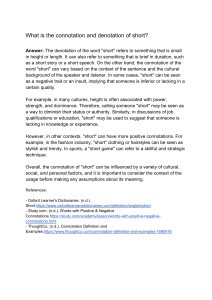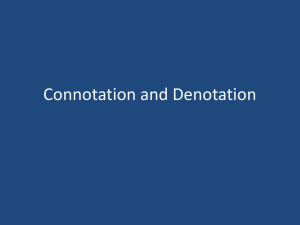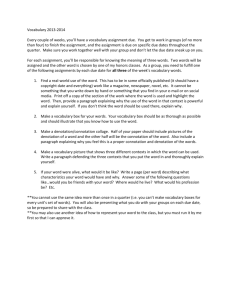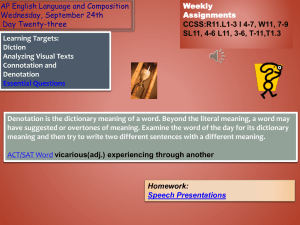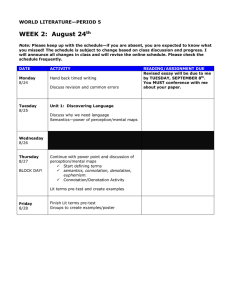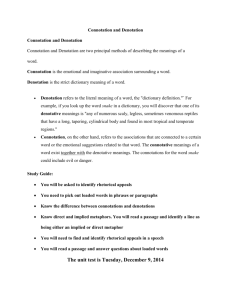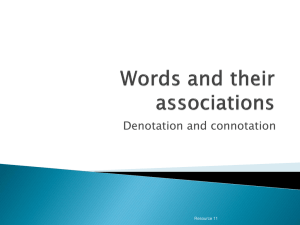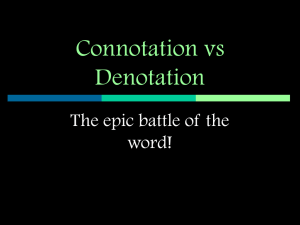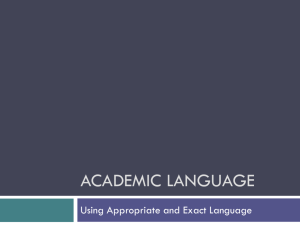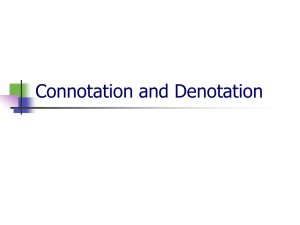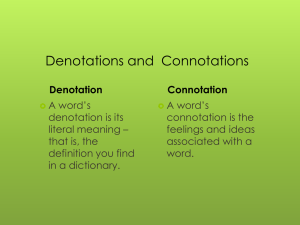Word Meaning: Semantics, Denotation, Connotation
advertisement
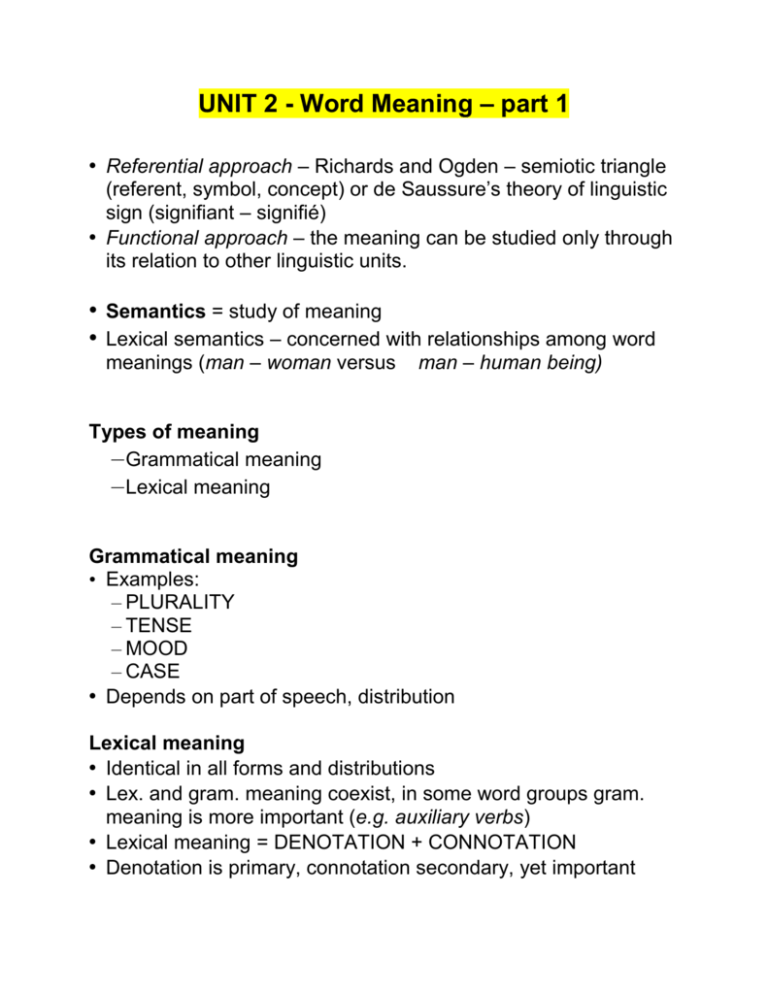
UNIT 2 - Word Meaning – part 1 • Referential approach – Richards and Ogden – semiotic triangle (referent, symbol, concept) or de Saussure’s theory of linguistic sign (signifiant – signifié) • Functional approach – the meaning can be studied only through its relation to other linguistic units. • • Semantics = study of meaning Lexical semantics – concerned with relationships among word meanings (man – woman versus man – human being) Types of meaning – Grammatical meaning – Lexical meaning Grammatical meaning • Examples: – PLURALITY – TENSE – MOOD – CASE • Depends on part of speech, distribution Lexical meaning • Identical in all forms and distributions • Lex. and gram. meaning coexist, in some word groups gram. meaning is more important (e.g. auxiliary verbs) • Lexical meaning = DENOTATION + CONNOTATION • Denotation is primary, connotation secondary, yet important Denotation • To denote = to represent • Denotational meaning = referential – makes communication possible • The meaning we usually find in the dictionary • The denotation of a word is its nucleus, the connotation its loose envelope of associations. Connotation • Expresses the emotion and style, personal attitude and point of view. • Associations or expressivity surrounding the word. • Can be positive or negative. • Can be high or low. • Important when translating – the connotation can be more important than the notional component • It is influenced by historical as well as cultural and social context • Some connotations are universal associations, others only personal Loaded Lexicon • When a lexeme is highly charged with connotations, we refer to it as ‘LOADED’ • typical for the language of politics, religion, fiction… • scientists and lawyers try to avoid highly connotative vocabulary.
